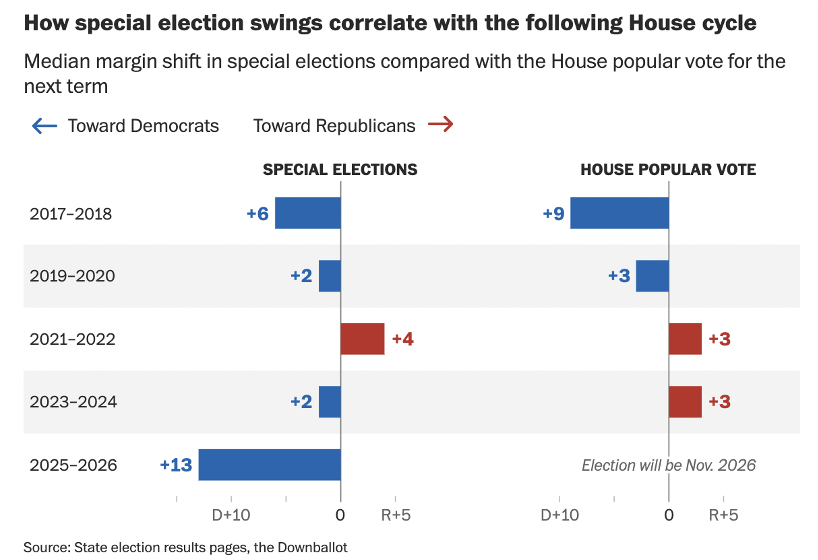Tuesday, Iowa Democrats flipped a State Senate Seat that Donald Trump carried by eleven points last November, breaking the GOP State Senate Supermajority. This came a few months after Iowa Democrats flipped another state senate seat that Trump won by 25 points. The Washington Post and Daily Kos looked at special elections dating back to the 1980s and found when a party steadily outperforms its last presidential result in special elections, it usually does well in the next Midterm.

By The Numbers:
In 2017, the median margin shift in special elections towards Democrats was six points. Democrats went on to shift nine points in the 2018 Midterms. In 2019, the shift was +2 points towards Democrats in special elections. It went on to be +3 points towards Democrats in the 2020 elections.
In 2021, that shift was +4 points toward Republicans in special elections and then +3 points toward the GOP in the 2022 Midterms. In 2023, the shift was +2 points toward Democrats. It shifted to +3 points toward Republicans in 2024 elections.
So far this year, the median margin shift has been +13 toward Democrats.
The Bottom Line: In past elections, more reliable high propensity voters most likely to show up in a special election or Midterms tended to be Republicans. These voters were more educated. Today, more college educated voters are identifying as Democrats or left-leaning Independents, giving Democrats an enthusiasm edge. Republicans can turn this around, but relying on personality instead of policy to turn out these folks out next year won’t be enough.